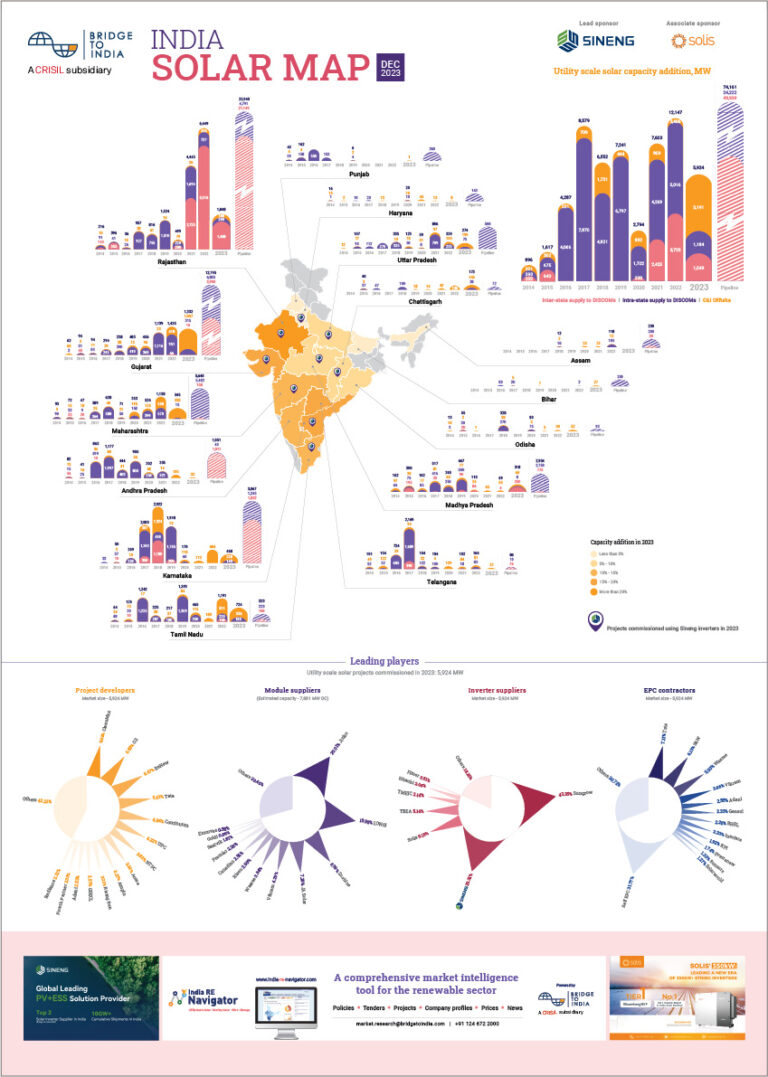India added only 1,033 MW wind power generation capacity in 2021, down 14% YOY, taking total wind capacity to 40,709 MW. This is the fourth straight year of decline in capacity addition after competitive auctions replaced feed-in tariff regime in 2017. Out of total allocated capacity of 12.4 GW for vanilla wind projects in the last five years, only 4.3 GW capacity has been commissioned so far. About 3.2 GW capacity has been surrendered voluntarily by project developers on various grounds under SECI tenders. Total remaining pipeline of vanilla wind projects is estimated at 4.9 GW.
Figure: Wind power capacity addition, MW

Source: BRIDGE TO INDIA research
Project completion track record continues to remain extremely poor for multiple reasons. Most importantly, significant cost hikes across the whole value chain and severe land/ ROW availability issues have rendered almost all under construction projects unviable. As a result of increase in metal and other input costs, total EPC cost has surged by 15-20% over the last year alone to about INR 70 million/ MW. The turbine suppliers, faced with increasing cost and execution risks, have been reporting losses over last few years. Consequently, they have resorted to higher prices and derisking of the business by switching from lumpsum EPC model to simple equipment supply model. The Indian manufacturers are in particularly deep financial trouble with many of them partly or wholly shutting down plants.
The project developers are, therefore, having to procure other components and services – project design, land, erection and commissioning, and transmission – piecemeal in many cases further increasing execution cost and risk. Unviable bid tariffs have forced the developers to delay or surrender projects. Some of the largest developers have cited reasons like increased capex, unavailability of land, force majeure etc. while surrendering projects. Average commissioning timeline for projects under initial SECI tenders was 36 months from date of auction. But progress has substantially deteriorated for projects awarded since 2018 onwards (see chart below).
Figure: Commissioning status for wind projects under SECI tenders

Source: BRIDGE TO INDIA research
Note: Dates in this chart represent dates of auction for respective tenders.
Unfortunately, cost pressures and land issues are expected to persist in the foreseeable future. SECI has so far taken a pliant view of project delays and given multiple time extensions to project developers on account of COVID and land/ ROW issues. But we believe that with sub-three INR tariffs being sub-optimal in most cases, many more projects are likely to be abandoned.
Such poor progress of wind sector is a cause for alarm. The role of wind power, as a complementary technology for solar power, cannot be understated. It is critical for balancing the grid and meeting India’s lofty climate targets. The government ought to undertake holistic assessment of the sector as well as the competitive bidding framework to unlock growth. More specifically, the tenders should have adequate safeguards against unrealistic bids and punishing errant bidders.












